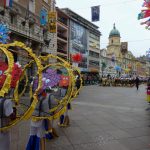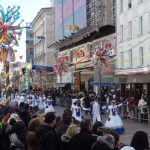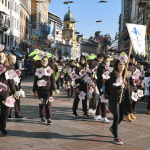It’s Carnival time and quite fittingly we welcome a native Brazilian to the ever-growing team of TCN authors. Debora was born and raised in Rio de Janeiro and now lives in Split. She has visited 5 continents, more than 30 countries and now calls Croatia home. Debora shares with us her impressions of the Rijeka Carnival versus the famous Rio Carnival. Welcome #124, if you would like to write for TCN, you can email us at [email protected]
Rio de Janeiro, land of one of the biggest celebrations in the world, and Rijeka, the main seaport city in Croatia: how does the Rijeka Carnival compare to its famous Rio counterpart? Oh, Carnival! Such a magical period of the year, when we all wait anxiously to spend time on the beach wearing flip flops, multi-coloured bikinis and light clothes. The kids are on vacation, playing around on the streets with friends and neighbours, parents are also on vacation, preparing for travelling to the seaside and enjoy some time off as well.
Ok, this is exactly how Carnival in Rio looks like, the city that holds the best Carnival in the world, a reference for music and culture. For 5 to 7 days, giant parades and colourful costumes enchant tourist and local people, who never get tired of singing the rehearsed songs all day long, eagerly waiting to see their samba parties fill up the Sambodromo Avenue with energy and a lot of joy.
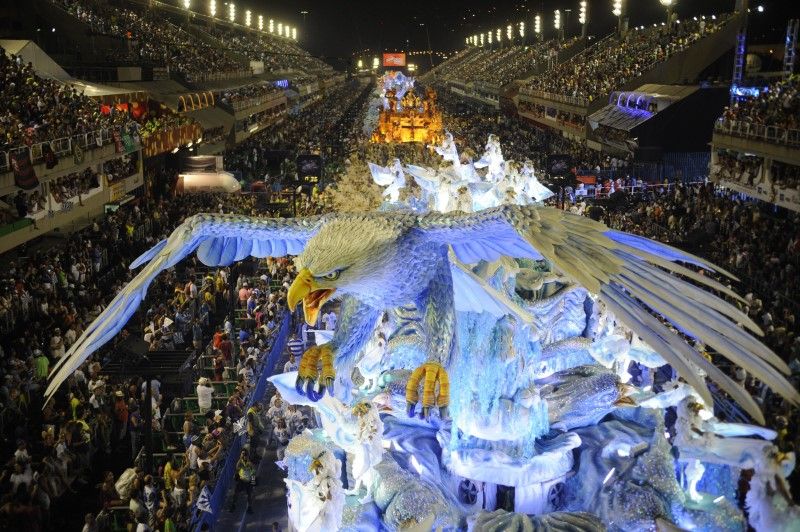
Credit: Wikimedia, Sambodromo Avenue
However, this is not how I will be celebrating as I am not back home in Brazil, I am now living in Croatia. Ironically, Rio and Rijeka both mean “river” and the comparisons don’t stop there, the Rijeka Carnival was once considered the third largest Carnival in the world and while they are worlds apart, it seems there are more similarites to consider… if you take a closer look.
Where to begin talking about the Rijeka Carnival versus the Rio Carnival?
Carnival in Rio started in the 1920s, with the first samba schools competing with each other in 1933. But before that, Carnaval (as the original name is spelt) was basically a food festival, as the word derives from carne vale (farewell to the meat), and until today, it is celebrated 40 days before Lent.
The rhythm and music style adopted during Carnival was originally brought from the African slaves who inhabited the poorest areas in Rio, the slums or “favelas”, and it was a way of the less favoured classes to rebel and protest against the injustices and misery faced at that time. However, this idea smoothly changed, as the upper-classes saw in Carnival, a great opportunity to make money. And that is when the samba schools and parades were organized. Nowadays, there are about 30 samba schools belonging to the main group and hundreds of other schools who also participate in the samba parades during Carnival.
And the history of Carnival in Rijeka? In terms of the calendar, it follows exactly the same period as in Rio, although the celebrations and festivities around the city may start at the end of January. Just like the beginning of Carnival traditions in Rio, the parades and parties were exclusively directed to and organized by the aristocracy (Austrian, Hungarian, German and Russian aristocrats, princes and barons of the European society).
However, this scenario started to change in 1982, with the presence of three groups on the parades. Things again changed in 2001, with almost 140 different groups and 150.000 visitors. Nowadays, there is a huge Carnival charity ball attended by important politicians, media people and well-known representatives of Croatian society, held in the Governor’s Palace located in Rijeka. As a symbolic opening of the Carnival period, the key of the city is given to the “maestro” Toni, as it means that he will be responsible for taking care of the city during the festival time, a Carnival queen is elected and the festivities start.
Croatians also found a way to ‘rebel against the system’ as the end of the festival is signalled by the burning of the ‘Pust’ – a puppet, often named after a politician. The Pust is blamed for all of the bad things that occurred the previous year, it is read a list of charges and afterwards is burned at sea! In Rio, they do the same, except he is called “Judas”, he is also normally a political figure who is blamed for everything, attached to a lampost, hit, and then burned.
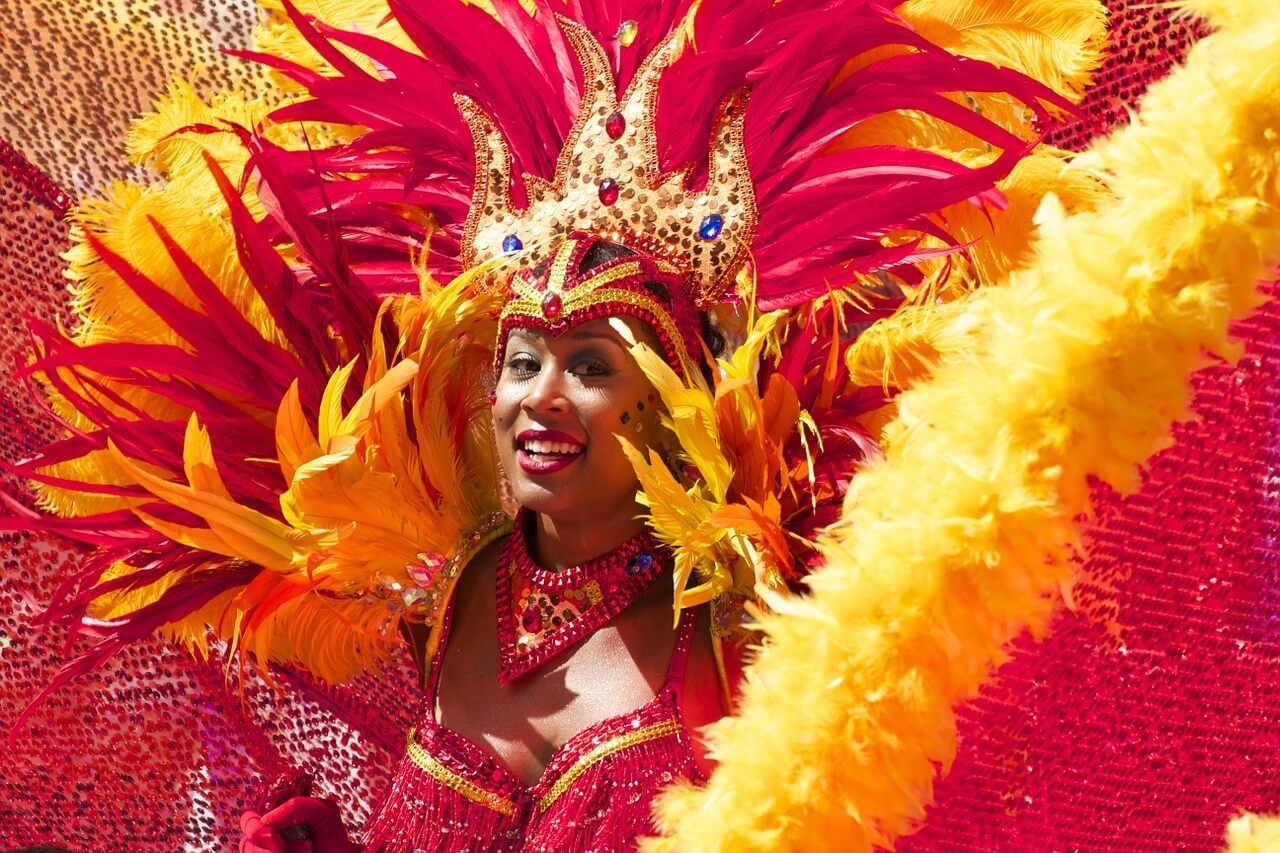
Photo Credit: Pixabay
Rijeka Carnival versus Rio: is the weather a factor?
Well, if I say no, it is a lie. So, yes, it has a big influence when it comes to these two carnival scenes. When I first came here in Croatia to spend Carnival, I thought that because of the cold weather in February and March, Carnival would maybe take place in summertime, as it is in Brazil. But of course, I was wrong to think like that (my Brazilian brain wishing to celebrate it on the beach).
Between January and March, with the cooler days and nights (between 6 and 10°C compared to Brazil with average temperatures between 25 and 32 degrees). I mean, this is the average temperature in the south of Brazil. Now, if we compare Rijeka and Rio during Carnival time, they are really two extremes, as Rio reaches 40 degrees almost every day during summer. It is unbelievable but oh, how I miss this!
In fact, I could live here in Croatia for 20 years and never get used to it. For a girl from Niteroi, 15 degrees is cold enough, plus here there are tons of sorts od winds: bura, jugo, maestral, tramontana…call it what you like, but I would just call them “cold and windy winter days”. So, it seems kind of weird or impossible to dress up in scanty costumes, like the “samba mulatas” and “samba passistas”. In Rio, performers eagerly await the whole year for this glorious moment – to cross the Sambodromo Avenue and be seen by millions of people around the world. Bearing this in mind, in Rijeka, I have still witnessed a few brave girls who pay no heed to the cold weather in order to show their best spectacle and dance samba wearing original costumes. I personally couldn’t do it, but svaka čast (well done) to them.
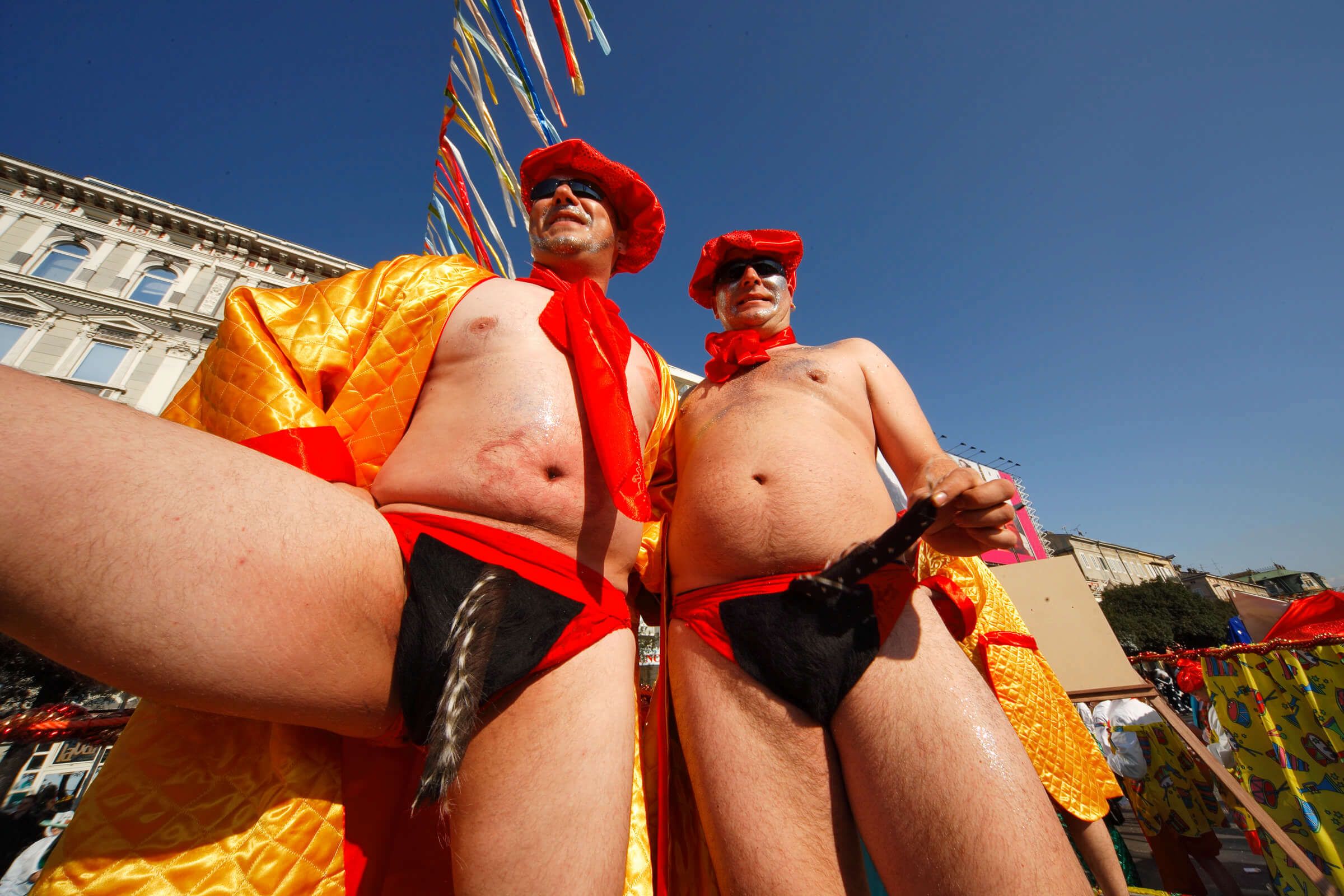
credit: Mario Romulic, with blue skies and outfits like these, you would be forgiven for not realising this was the Rijeka Carnival in the middle of winter!
How many people visit the Rijeka Carnival versus Rio Carnival?
When it comes to numbers in attendance, it is unfair to compare the Rijeka Carnival to the Rio Carnival; Rio has visitor numbers of around 2 million people on the streets every day in attendance, comparatively Rijeka has up to 10.000 for the main parade and around 100,000 visitors in total. But, considering the city of Rio has a population of 6.3 million (more than the entire population of Croatia), compared to Rijeka’s humble 120,000 it is definitely not a bad effort. Especially when you take into account that the weather is cooler and Carnival occurs outside of the summer and tourist season. To tell you more, in 2018 the Rijeka Carnival won ‘Simply the Best Award’ for creativity, excellence and inventiveness in the category of Multiday Thematic Events. The Rijeka Carnival is a great bonus for tourists who choose to visit in this period compared to the peak season.
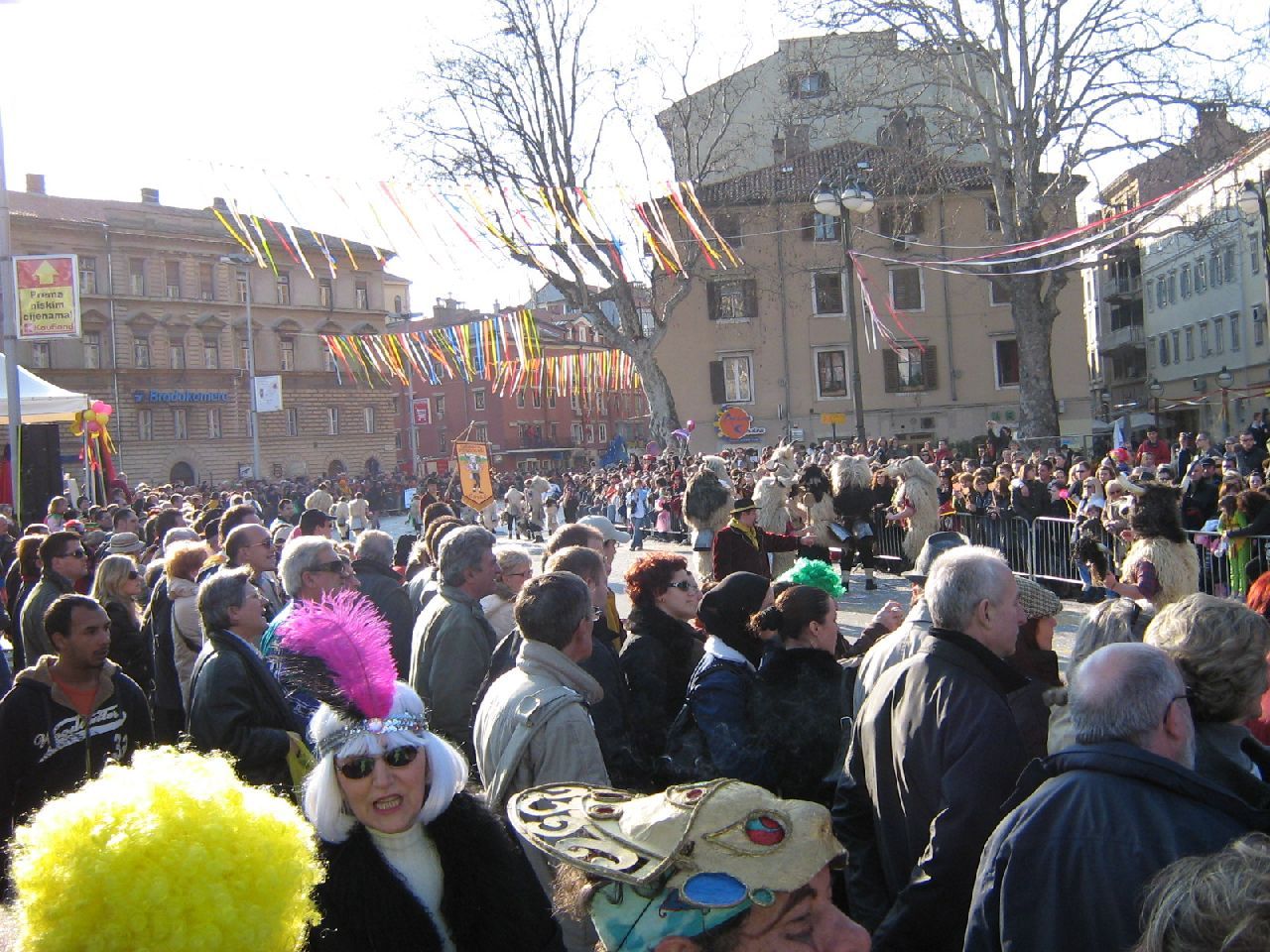
Photo Credit: Wikimedia, crowds lining the streets for the Rijeka Carnival
When does the Rijeka Carnival and Rio Carnival take place?
This year, Carnival in Rio will take place between 1 – 5th March 2019, with an extra parade on the 9th of March (the 8 best samba schools will be once more on the Sambodromo Avenue). In Rijeka, however, the festivities have already started (from January 17 to March 6, ending on Ash Wednesday). If you wish to get more information about schedules, tickets and program, you can take a look at www.rio.com and www.rijecki-karneval.hr.
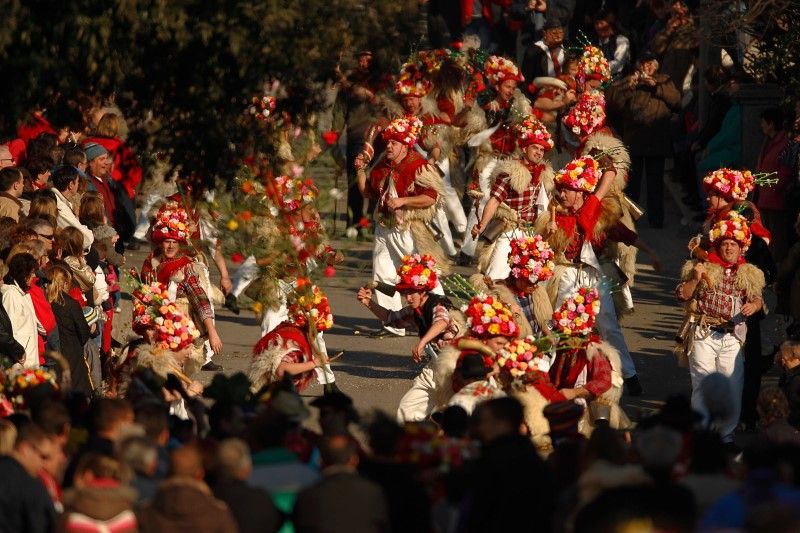
Photo Credit: Mario Romulic, Rijeka Carnival
Rijeka Carnival versus Rio: Food and Drink
While I am here in Croatia enjoying cups of coffee to survive this cold weather and be kept awake, in Rio, my friends and family, along with millions of people from all over the world pack the main streets near the Samba Avenue and beaches, hotels and hostels. There, they enjoy the parades with glasses of cold beer in hands, coconut water or caipirinhas (ahhhhhh), what is important, at this time during Carnival, is to refresh your body and keep yourself hydrated. The days are very warm and, although the sea water can be around 15 degrees, people are encouraged to jump into the sea. I miss that deeply.
In Rijeka, nobody will jump in the sea (I mean, I would not, for sure). But, it does not mean that tourists will find less attractive things to do. For example, food. Yes, food in Croatia is really a thing. For tourists or locals, it is always a great experience to try some of the unique tastes of Croatia, check out this article on 10 Gourmet Istrian specialities not to miss, for an idea of the type of food you can expect in this region.
The Greatest Similarity Between the Rijeka Carnival and Rio Carnival?
What both of these Carnivals have in common is the fact that the traditions, cultural customs and folklore are being preserved and spread through generations, no matter who performs better or not during the parades. It is a time to come together, dance, enjoy and celebrate. The world can be so hard that Carnival can be a time to unwind and enjoy life, hoping for more positive and brighter days.
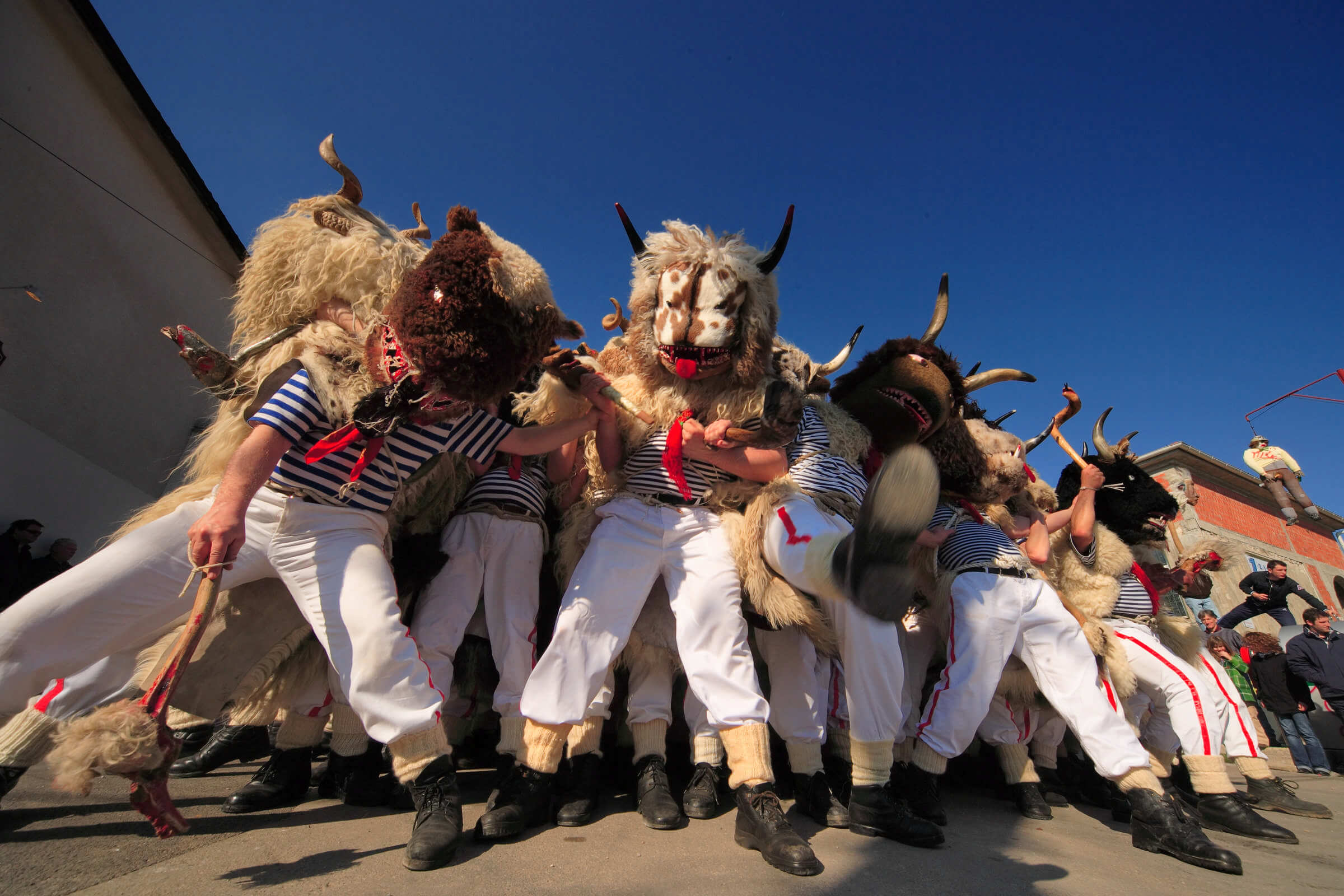
Photo Credit: Mario Romulić, Rijeka Carnival, Zvončari from Ronjgi – UNESCO Intangible Heritage Protected
Read more about Rijeka, the City that Flows… in our 25 Things to Know series.

